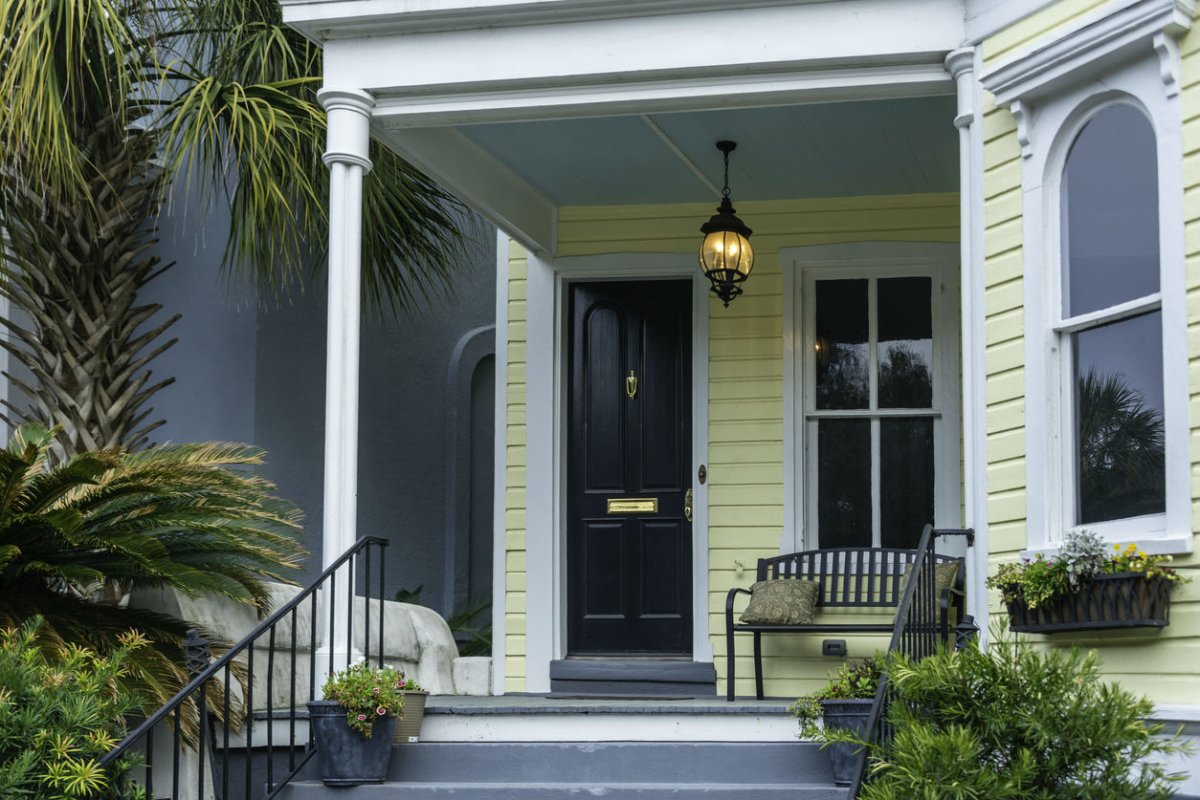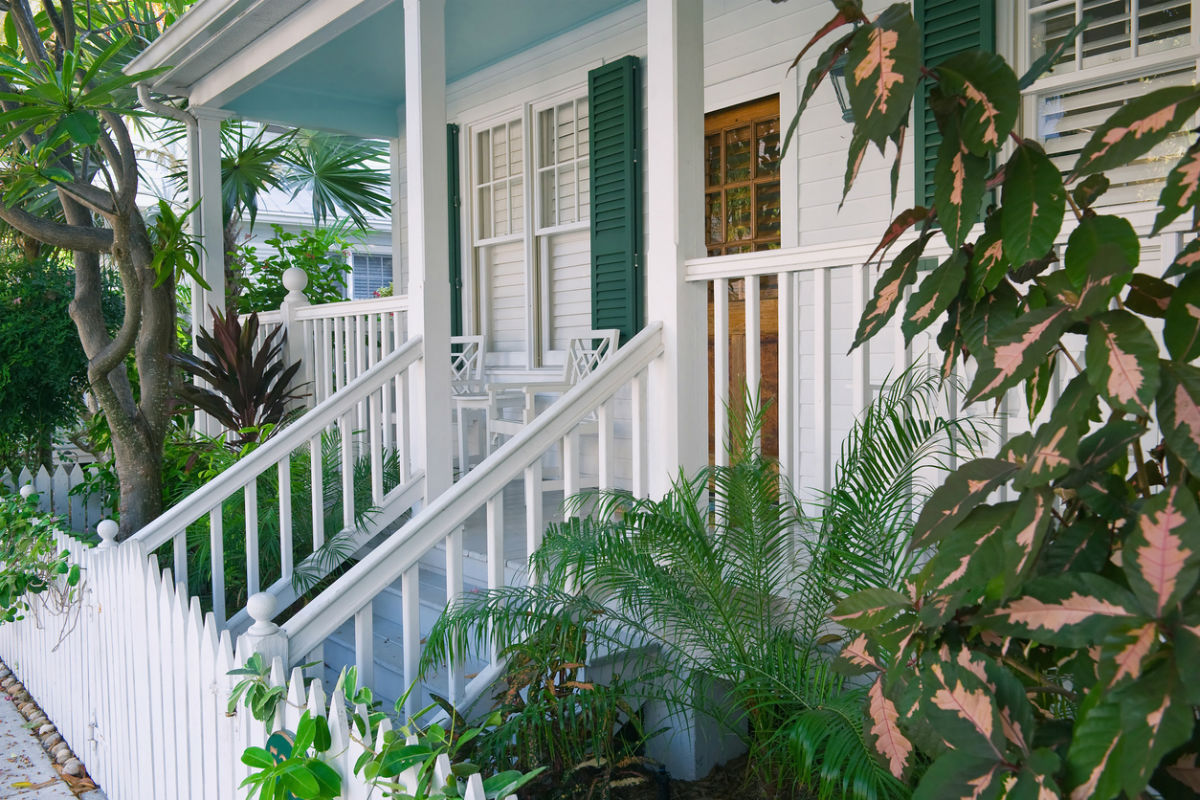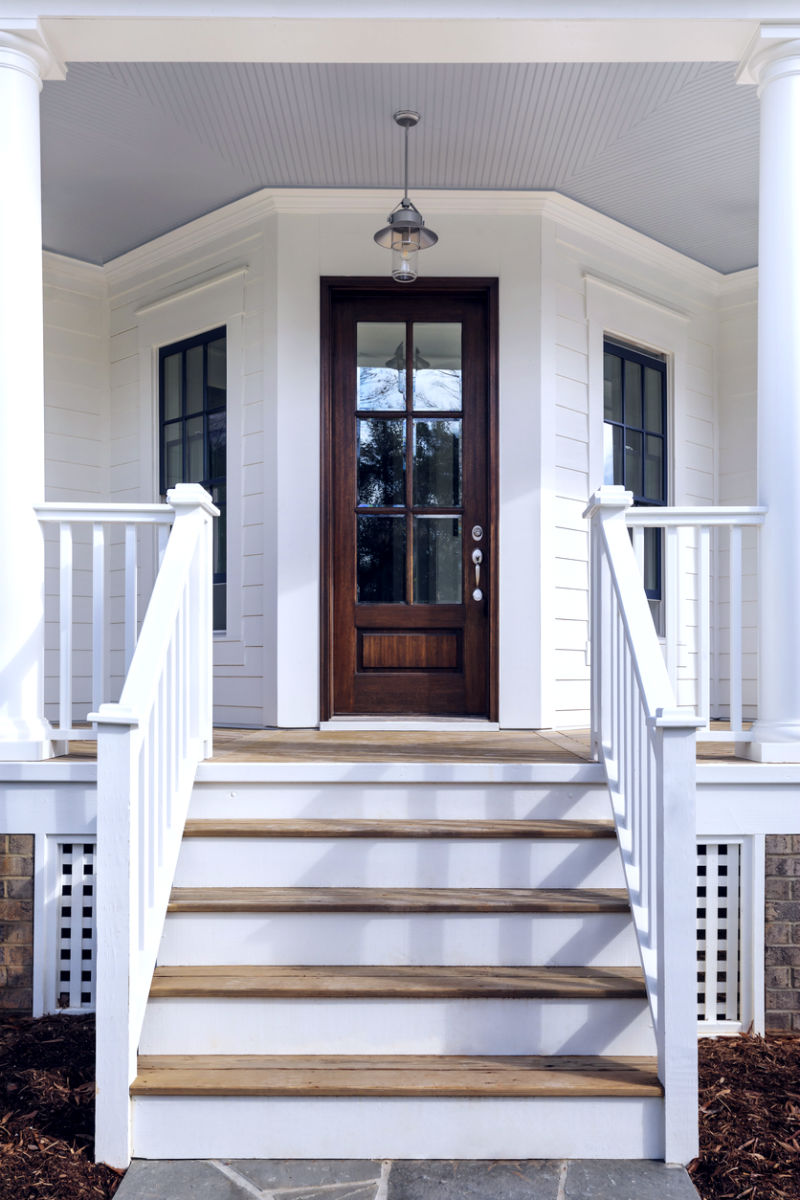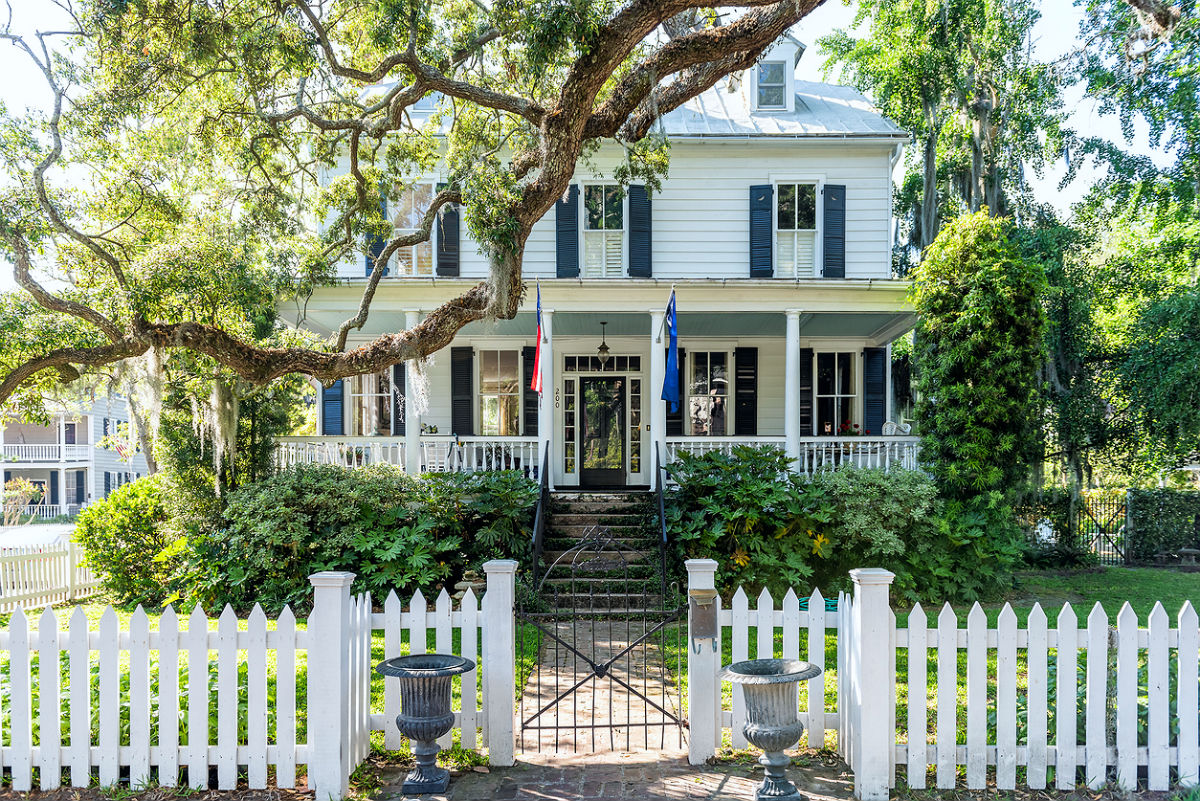

We may earn revenue from the products available on this page and participate in affiliate programs. Learn More ›
Q: Why do so many homes in the south have a blue porch ceiling? And what’s the best way to recreate the look on my porch?
A: Many who have strolled the streets of the South and admired the quaint blue porch ceilings have wondered about their origin. Certainly, a blue porch ceiling can create calming ambiance and boost curb appeal—two reasons why the tradition remains popular—but the truth behind the trend may surprise you. Read on to find out why blue porch ceilings first cropped up more than two hundred years ago and learn how to successfully recreate the look for your home.
The tradition is rooted in Gullah culture.
Blue porch ceilings first appeared at antebellum plantations of the early nineteenth century due to the tradition of the Gullah (a.k.a Geechee) people, enslaved African Americans in the coastal areas of Georgia and South Carolina. Gullah folklore held that ghosts—known as “haints” (and pronounced “haunts”) in the Creole dialect—could not cross water, and because blue resembles water, ceilings were painted this color to repel evil spirits. For good measure, the Gullah also often painted doors, window frames, and shutters the same shade. To this day, a range of pale blue-green hues is collectively known as “haint blue.”
Blue porch ceilings also appeared in the Northwest (where the Aurora Colony, a Christian commune, was founded) as well as on East Coast Colonial and Victorian homes from Philadelphia to Boston. Today, however, there are still more blue porch ceilings in the American South than anywhere else.
RELATED: Historic Paint Colors: New Insights and Ideas for Owners of Centuries-Old Homes

It was used as an insect repellent.
There was a more down-to-earth rationale for blue porch ceilings, too—the notion that it could keep wasps and other pests from building nests there. The theory was that insects would mistake the blue ceiling for the sky and set up housekeeping elsewhere. The blue paint actually did thwart insects, but not by outsmarting them. Back then, paint was often mixed with lye, a natural insecticide, so any lye-based paint would have sent pests packing.
It gave the impression of longer days.
Sky blue porch ceilings had another benefit. Anyone on the porch at the end of the day could look up and see a blue sky instead of a dark one, thus creating the illusion of extended daylight. The paler the blue, the more light reflection, which brightened the porch and further enhanced the effect of a longer day.
RELATED: 22 Transformational Front Porch Ideas Your Neighbors Will Want to Copy

Factor regional trends into color selection.
Those hoping to keep the tradition alive should first consider if a blue porch will complement the style and color of their home. Then, choose from one of three main variants of blue, historically used on porch ceilings in different regions:
- Haint blue, popular in the South, can refer to any pale blue-green, such as Benjamin Moore’s “Palladian Blue.”
- A light, airy sky blue like Sherwin Williams’ “Atmospheric” is prevalent on the East Coast.
- A vibrant aurora blue, a la BEHR’s “Cosmic Cobalt,” is more common in the Northwest.
Paint porch ceilings using proper techniques.
Follow this process when painting a blue porch ceiling for pro-quality results:

- Choose a mildew-resistant exterior primer-and-paint if painting a bare porch ceiling for the first time, repainting a previously painted surface the same color, or switching from a lighter to a darker hue. If your porch ceiling wood doesn’t bleed (i.e., give off tinted compounds called tannins), go with water-based paint. Opt for an oil-based paint for a ceiling made of metal (e.g., corrugated steel) or a type of wood that bleeds tannins (e.g., cedar) to prevent rust or bleed-through. Note that paint with a flat/matte sheen will minimize cracks and other imperfections.
- Choose a dedicated exterior paint (used in addition to a separate primer, discussed next) if painting over a stained wood porch ceiling, switching from a darker to a lighter paint color, or covering oil-based paint with a water-based product.
- If a separate paint and primer are needed, get primer labeled for exterior use. The color should be close to that of the paint, e.g., a white, light gray, or light blue primer for a haint blue porch ceiling.
- Lay drop cloths on to protect the porch floor from splatter. Don a hat for protection from falling grit and old clothes you won’t mind soiling.
- Hose down the ceiling to remove cobwebs and grit from the ceiling. Let the porch ceiling dry completely before painting.
- Mask off whatever you aren’t painting. Tape off any area of the porch ceiling you don’t want to paint, such as the siding just below the ceiling, with painter’s tape.
- Choose the best paint roller cover and nap length for the job. Generally, synthetic roller covers (e.g., polyester, nylon) are better when working with water-based paint while natural fiber covers (e.g., wool, mohair) suit oil-based paint. Go with a roller cover nap length (the length of the fibers on the cover) of at least three-eighths of an inch. For beadboard ceilings (narrow slats with deep voids in between them), use a thicker half-inch or three-quarter-inch nap to get the paint into all the crevices.
- If using a separate primer, apply it first with the paint roller. Start at the edges and then across the ceiling surface in an up and down motion (or in the direction of the ceiling slats). Let the primer dry for the period listed on the product instructions.
- Finally, apply paint or the primer-and-paint. Roll on your paint just as described above, letting it dry for the period listed on the product instructions. Apply an additional coat if needed to achieve a deeper color, then let it dry.

